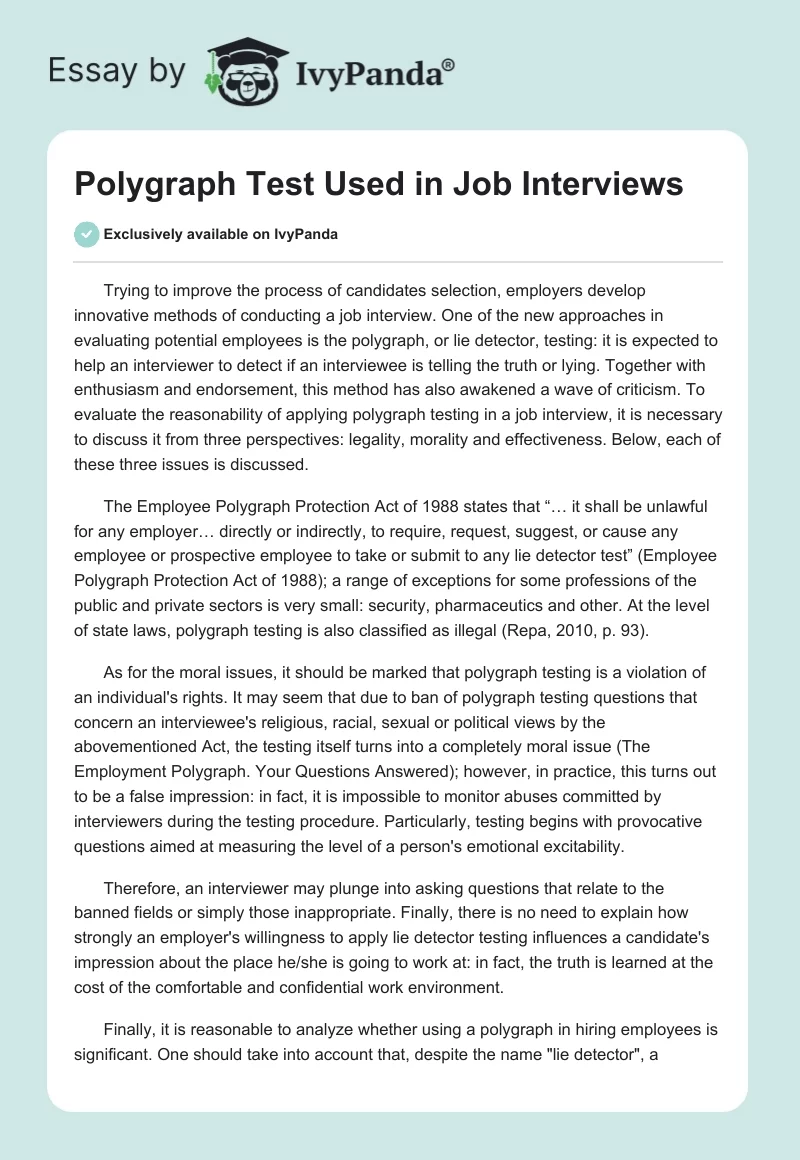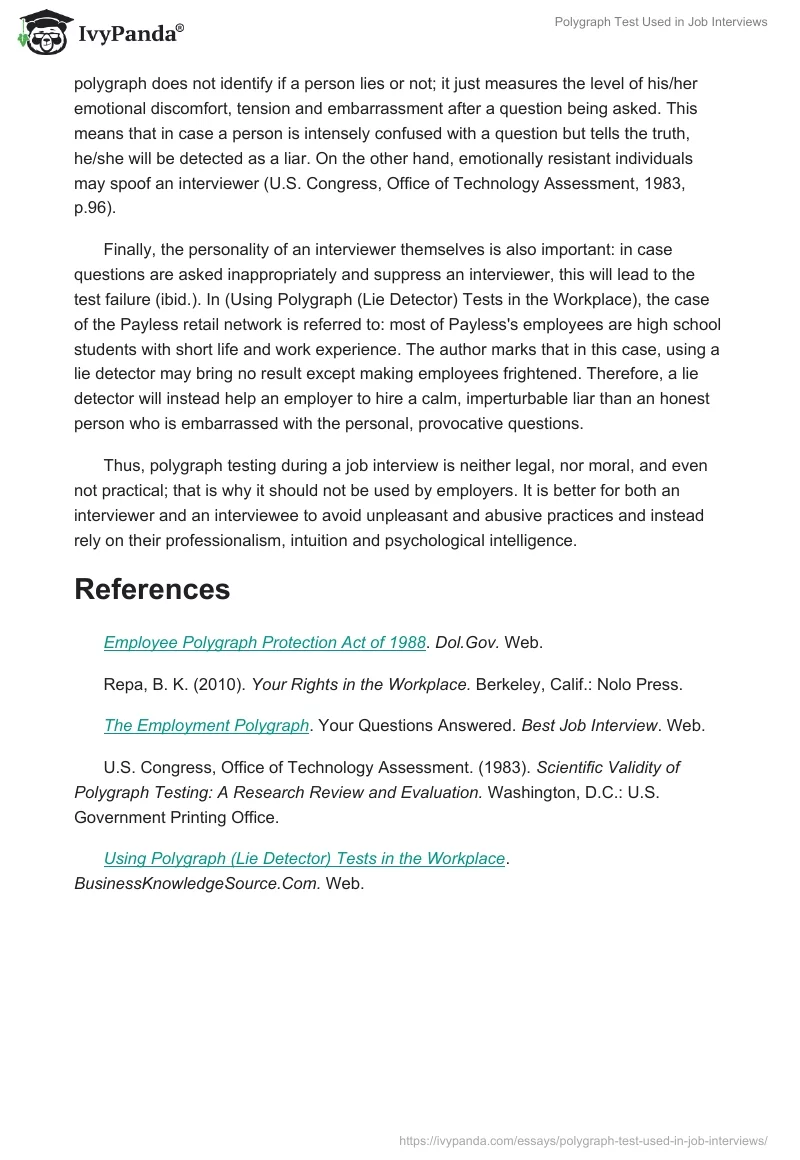Trying to improve the process of candidates selection, employers develop innovative methods of conducting a job interview. One of the new approaches in evaluating potential employees is the polygraph, or lie detector, testing: it is expected to help an interviewer to detect if an interviewee is telling the truth or lying. Together with enthusiasm and endorsement, this method has also awakened a wave of criticism. To evaluate the reasonability of applying polygraph testing in a job interview, it is necessary to discuss it from three perspectives: legality, morality and effectiveness. Below, each of these three issues is discussed.
The Employee Polygraph Protection Act of 1988 states that “… it shall be unlawful for any employer… directly or indirectly, to require, request, suggest, or cause any employee or prospective employee to take or submit to any lie detector test” (Employee Polygraph Protection Act of 1988); a range of exceptions for some professions of the public and private sectors is very small: security, pharmaceutics and other. At the level of state laws, polygraph testing is also classified as illegal (Repa, 2010, p. 93).
As for the moral issues, it should be marked that polygraph testing is a violation of an individual’s rights. It may seem that due to ban of polygraph testing questions that concern an interviewee’s religious, racial, sexual or political views by the abovementioned Act, the testing itself turns into a completely moral issue (The Employment Polygraph. Your Questions Answered); however, in practice, this turns out to be a false impression: in fact, it is impossible to monitor abuses committed by interviewers during the testing procedure. Particularly, testing begins with provocative questions aimed at measuring the level of a person’s emotional excitability.
Therefore, an interviewer may plunge into asking questions that relate to the banned fields or simply those inappropriate. Finally, there is no need to explain how strongly an employer’s willingness to apply lie detector testing influences a candidate’s impression about the place he/she is going to work at: in fact, the truth is learned at the cost of the comfortable and confidential work environment.
Finally, it is reasonable to analyze whether using a polygraph in hiring employees is significant. One should take into account that, despite the name “lie detector”, a polygraph does not identify if a person lies or not; it just measures the level of his/her emotional discomfort, tension and embarrassment after a question being asked. This means that in case a person is intensely confused with a question but tells the truth, he/she will be detected as a liar. On the other hand, emotionally resistant individuals may spoof an interviewer (U.S. Congress, Office of Technology Assessment, 1983, p.96).
Finally, the personality of an interviewer themselves is also important: in case questions are asked inappropriately and suppress an interviewer, this will lead to the test failure (ibid.). In (Using Polygraph (Lie Detector) Tests in the Workplace), the case of the Payless retail network is referred to: most of Payless’s employees are high school students with short life and work experience. The author marks that in this case, using a lie detector may bring no result except making employees frightened. Therefore, a lie detector will instead help an employer to hire a calm, imperturbable liar than an honest person who is embarrassed with the personal, provocative questions.
Thus, polygraph testing during a job interview is neither legal, nor moral, and even not practical; that is why it should not be used by employers. It is better for both an interviewer and an interviewee to avoid unpleasant and abusive practices and instead rely on their professionalism, intuition and psychological intelligence.
References
Employee Polygraph Protection Act of 1988. Dol.Gov. Web.
Repa, B. K. (2010). Your Rights in the Workplace. Berkeley, Calif.: Nolo Press.
The Employment Polygraph. Your Questions Answered. Best Job Interview. Web.
U.S. Congress, Office of Technology Assessment. (1983). Scientific Validity of Polygraph Testing: A Research Review and Evaluation. Washington, D.C.: U.S. Government Printing Office.
Using Polygraph (Lie Detector) Tests in the Workplace. BusinessKnowledgeSource. Web.


